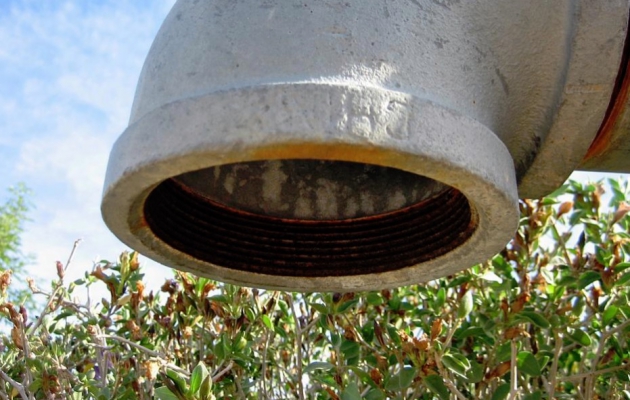The air conditioning system in your home is designed to remove the heat from your home and remove the humidity at the same time. During those sticky summer days, your AC system can remove a great deal of moisture from your indoor air. All of that moisture (water) has to go somewhere, and your system deals with this condensate in a very specific way. Let’s take a closer look at how this system works, how the drain line can become clogged and how you can clear it.
How the Condensate is Removed
The water that is collected from your indoor air is collected in the air handler’s condensate drip pan. From here, the water flows into a drain tube that leads out of your home to carry the water away. Unfortunately, the drain tube can become blocked; this usually happens because of a clog, and over time this can develop into water damage.
How Does a Drain Clog Form?
The collected water in the condensate pan may look clear, but it contains tiny dirt particles and microscopic bacteria collected from the air. When the condensate drips slowly through the drain line, some of this water leaves a residue on the internal drain tube surface. This residue contains the aforementioned tiny particles and over time they accumulate. The residue can form into small wet clumps of dirt and dust, and the bacteria can grow into formations of algae or mold.
Because the drain tube leads to the outdoors, it’s also possible that clogs could form there too. This is especially true if your drain terminates in a dirty or dusty area, where dirty clogs can easily develop. If the AC system hasn’t been used for a while, you may even find that you have an insect nest in the drain tube opening.
How Will You Know That There is a Drain Clog?
When there is a drain line clog, what occurs next will depend on your air handler. Different air handlers will have differing ways to detect that the drip pan too full. A more modern air handler may just shut the system down, and a very sophisticated smart model could even send an alert to your phone. This is inconvenient, but it’s better than the consequences of allowing the drip pan to overflow and cause water damage. If you have an older air handler, it may not have these features, and you might not notice that there is a problem until the drip pan has overflowed. If you see this, shut the AC system down immediately and remove the drain clog.
How to Clear a Clogged Drain Line
When you attempt to clear a drain line, you will need certain equipment, such as a wet/dry vac and you may need an air compressor. The air handler could be located in your attic, so you would need ladders and a safe way to work in tight spaces. Locate the drain pan, slide it out, remove the water, clean the drain pan and clear the line with air pressure. Clean the drain pan re-assemble and test that the system is working. If you’re not sure how to access your air handler or you lack this equipment, contact a local HVAC company for a quick repair.

